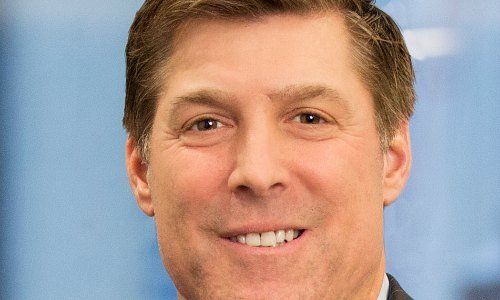How UBS Plans to Reap 1 Billion Profit From Asset Management
UBS’s asset management has long been in the shadow of its wealth management and its investment bank. Two executives of the unit tell finews.asia how the bank plans to get the unit to 1 billion francs in pre-tax profit.
Last year, the unit led by Ulrich Koerner since 2014 posted a profit of 600 million Swiss francs. Asset management has long been treated as a poor relation compared to UBS' far more profitable flagship private banking operations.
There are bright spots like boutique O’Connor, an options trader acquired by then-Swiss Bank Corp. (later UBS) in 1992 which has morphed into a hedge fund now run by rising star Dawn Fitzpatrick.
The wider asset management unit is difficult for UBS' investors to grasp: management fees are usually steady, but performance fees can swing wildly from quarter to quarter. And the departure of a big client, as the Swiss bank suffered earlier this year, can be a body blow.
1 Billion Profit Target
When Koerner took over in 2014, he unveiled the 1 billion profit target for the asset management unit.
Formerly the bank’s operating chief, Koerner is used to the cost-cutting side of banking. How to grow the bank’s asset management operations, which had for years been rumored to be on the block, was another story entirely.
UBS’ top management decided in 2013 – one year after announcing it would dramatically pare back fixed income activities – to keep the asset management unit.
Room to Grow?
Koerner, who has never granted an interview to western media since taking his current role, was dispatched to modernize it.
There isn’t much room to grow: UBS is already the second-largest hedge fund investor behind Blackstone globally, and ranks first in asset management for Switzerland.
An initial push under Swiss asset management head Karin Oertli and Bill Ferri, who runs the unit’s hedge fund solutions group, is to sell more equity and alternative investment products like real estate and hedge funds to pension funds, which have historically been heavier into conservative fixed income products.
Pension Funds' Cash
The introduction of negative interest rates in Switzerland in 2014 and elsewhere has been an unexpected windfall for the duo.
Pension funds sit on piles of cash in order to meet their payout obligations, so they are even more desperate for a reasonable return as negative interest rates eat into their funds.
Alternative investments are one option: smaller funds in Switzerland only hold 1 to 2 percent of their invested assets in hedge funds and similar vehicles, according to a recent study by Swisscanto – well off the 15 percent maximum allowed by law.
4 to 5 Percent Return at Zero-Interest Rates
«The bigger ones with their own investment professionals often use up to 15 percent, and we now see a shift from a yield perspective that pension funds need to open up, otherwise they may have difficulties fulfilling their obligations,» Oertli told finews.asia.
Originally a wealth management executive, she was promoted to the top Swiss asset management job in 2014 (in German).
The target of portfolio managers is to seek a «reasonable» return over the risk-free rate, that doesn't show volatility linked to equity markets and ideally not correlated to interest rates hikes, Ferri says.
«Chase the Hot Return»
He believes that clients can be satisfied with a return of 4 to 5 percent, is U.S. dollar terms, in times of record low or negative interest rates such as now.
«The danger is always that investors chase the hot return, and hedge funds are no different. And if you’ve done that in hedge funds, you’ve tended to suffer over the last several years,» Ferri said.
Instead, UBS argues for more stringent checks, better risk management, to spread or diversify funds, and to stick it out at least one market cycle.
Demystifying Hedge Funds
UBS has long sought to demystify hedge funds for clients, with some success. Oertli and Ferri's efforts mirror those of Juerg Zeltner at UBS' private bank, where dormant piles of cash are a worry.
Long-short strategies, which is the largest chunk of the hedge fund market, have dragged down performance in the overall category. This does not endear them to the type of wealthy or institutional investor that Oertli and Ferri are targeting.
Private Banking Blueprint
Using wealth management as a blueprint, Oertli and Ferri see themselves as partners and trusted advisors, as opposed to sellers. When hedge funds are involved, this is a tough sell.
«We see partnering as a fiduciary as opposed to advising or just selling as something that is going to be increasingly valuable, but it’s not an easy sell – it’s a work in progress,» said Ferri (pictured below).

Part of the reason is the miserable performance of hedge funds in recent months, which as experts like Blackstone chairman and billionaire Tony James referring to a day of reckoning.
Hedge Funds Long-Term
Under Koerner, UBS has pledged to remain in the business for the long term, something Oertli and Ferri underline. This includes what they see as customizing to clients’ needs instead of chasing transactions – including being flexible on fees in some cases, Ferri said.
UBS’ strong balance sheet and its willingness to invest in infrastructure and other resources like lifting teams from competitors is an advantage against independent asset managers, he said.
Poaching Teams
Sustainable investments, boutique O’Connor and up-and-coming regional hot spots are areas where the unit envisions bulking up by hiring talent, Ferri said.
«I consider it a great advantage to have access to UBS distribution globally, we we can focus on investment talent and risk-adjusted investment performance – that's the only way we can reach our target of 1 billion pre-tax contribution to shareholders.»




























